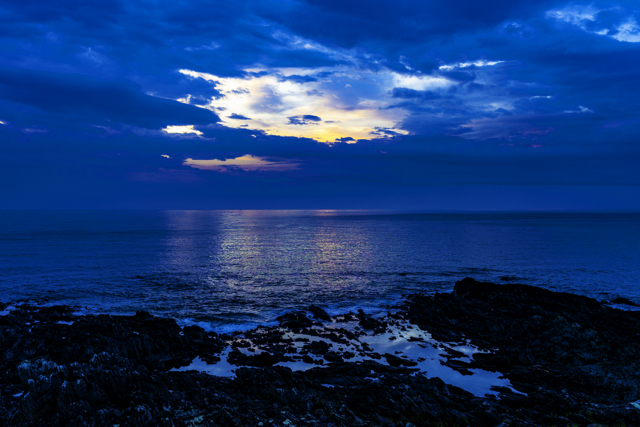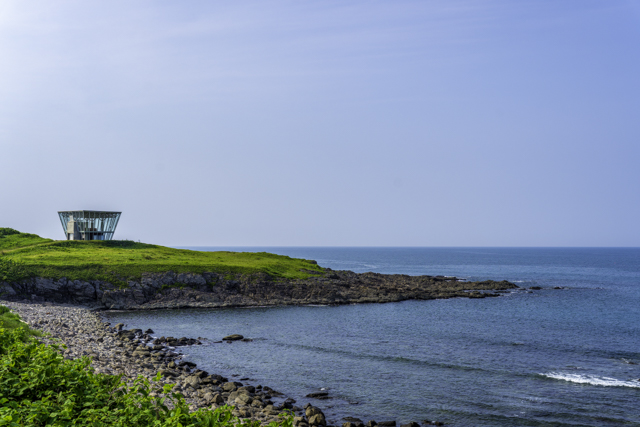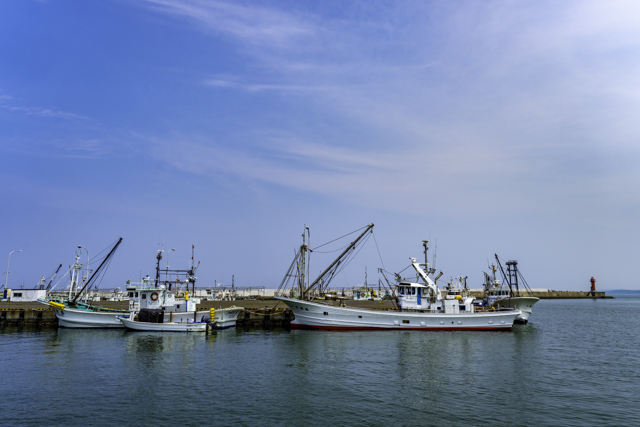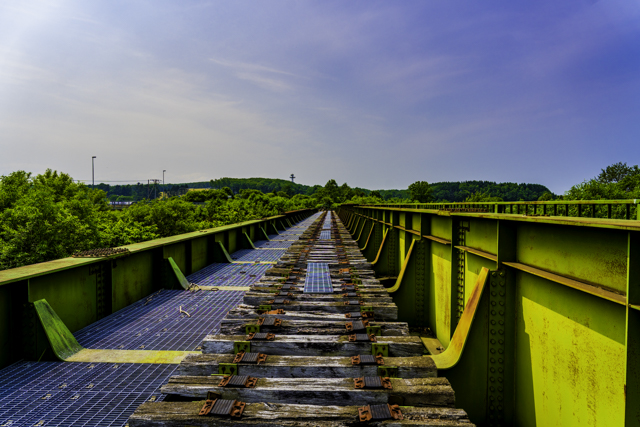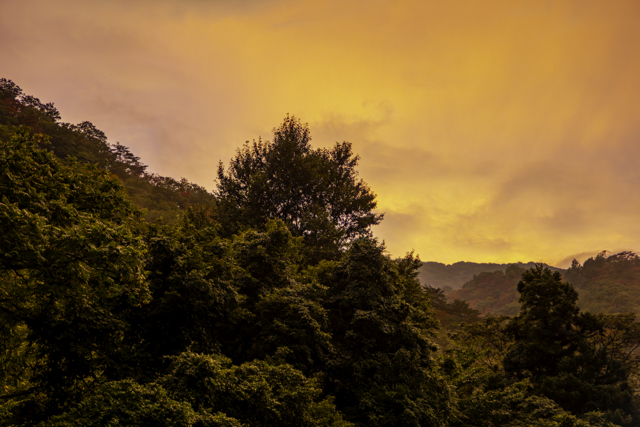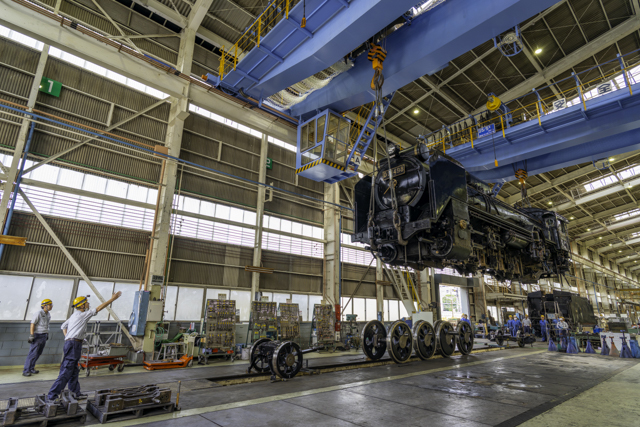
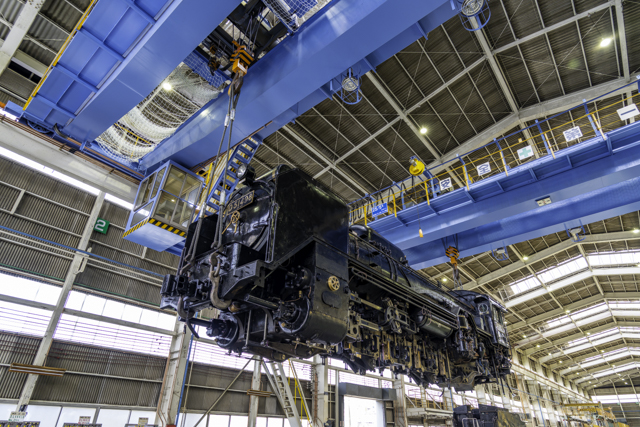
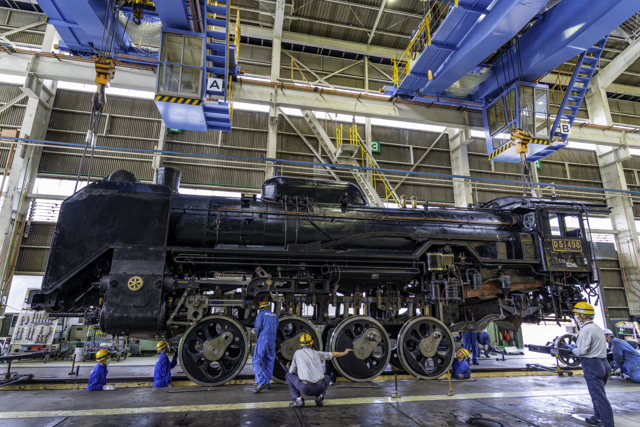
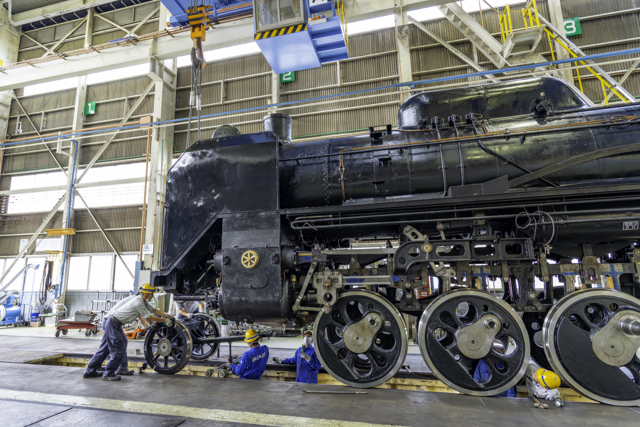
My insomnia has worsened since the end of last year. In addition to having problems falling asleep, my heart rate is high even during the late night hours.
Perhaps it is because of my impatient nature, but when I try to sleep in a straightforward manner, it seems to have the opposite effect. I know that blue light from PC or smartphone can inhibit me from falling asleep, but the only way to avoid late-night irritability is to gradually lower my heart rate while surfing around the Internet.
One of these nights, I found a factory tour on East Japan Railway Company (JR East) website. It was a tour to see the inspection process at their Omiya Maintenance Facility, especially for a part of the process that the body of D51 498, a steam locomotive that would be almost completely assembled, to be lifted and combined with her wheels. I had seen the process on news media, but never thought I would be able to actually see it. It could be an excuse that I had a 20-70mm zoom lens and could make use of my photographic equipment in the Facility, where a wide-angle lens might be needed.
The main obstacles would be the 30,000 yen entry fee and the schedule, which was Monday afternoon.
It is not that I am so busy that I cannot even take a weekday off, nor my absence stop the work of my employer. Yet I had been holding off on my decision for a few days until the time to submit my telecommuting schedule for the following month. I looked JR East website again and found that there were still some vacancies. This must be god of steam locomotive telling me to come. I added my day-off plan to my telecommuting schedule, and at the same time, I signed up for the JR East tour.
I only needed to arrive at Omiya a little after noon on the day, I had no problem getting up late even though it was Monday. As someone who has trouble falling asleep, that alone should made worth to take day-off. I was not sure if I should have taken into account the risk of JR East train delays when visiting their facility, yet I still arrived at Omiya with plenty of time to spare.
Upon registration and orientation, the tour began. After careful preparation, cranes were used to lift up the locomotive body, which was then moved over the track where the locomotive wheels were lined up, and the locomotive body was gradually lowered while adjusting its position. This is the world of craftsmanship, but even such professionals must get tense performing a task that cannot go wrong in full view of the public. Even so, the staffs were very gracious in stopping the work in the middle and allowing us time to take pictures. This must have been the first and last time to see this kind of work in real life. I would like to express my gratitude for this good opportunity.
The tour lasted about two hours and extremely enjoyable. I go to my company with disgust even though I am paid to do so, but I go to other company with joy even though I pay to do so. Something may be wrong with my life.
On the way back from Omiya, I got off at Nippori and stopped at a soba restaurant. It was a popular restaurant and hard to get a reservation, I can recently visit there once or twice a year only. It was as delicious as ever. I even stopped by a bar after the dinner. I was so satisfied that I could hardly believe it was Monday, and returned to my home in Yokohama.
As I was sitting in the Keihin Tohoku Line train on my way home, my Apple Watch beeped just past Kamata Station. I had set the alarm to go off when my resting pulse rate exceeded 120. On the return trip from Hakodate the other day, the alarm only went off just before the Yokohama Bay Bridge as I went into Yokohama City, but this time it kept going off from just before the Tama River crossing for Kanagawa Prefecture till the nearest station to my home. I hesitated to walk home from the station, and took a cab. Even though I rested at home for a while, my pulse was still over 100, and there was no way I would be able to sleep easily.
Something must be wrong with my life.

